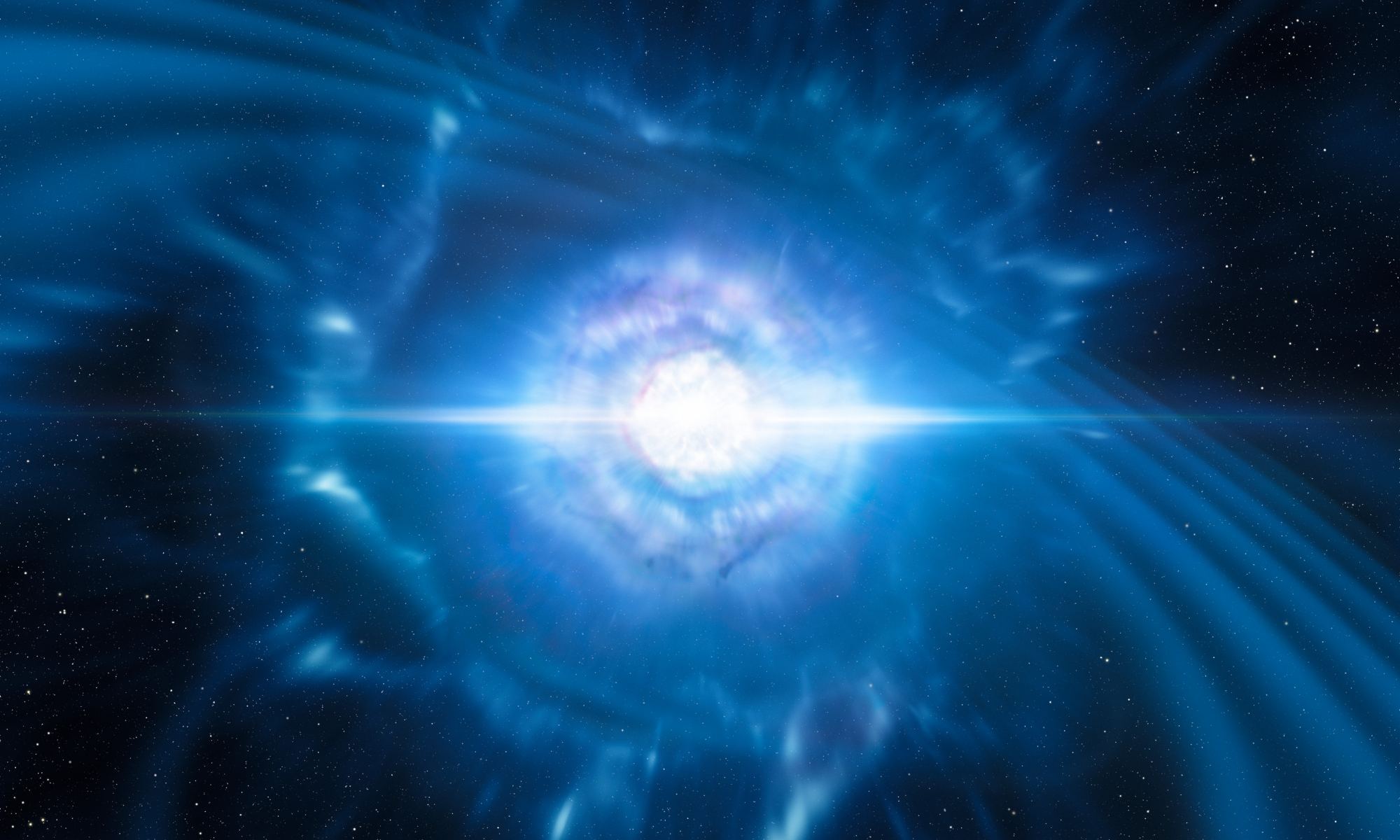In addition to their intense magnetic fields and copious output of x-ray radiation, neutron stars might have one more trick up their sleeves. They might be able to turn gravitational waves into an extra source of photons.
Neutron stars have two things going for them. For one, they have incredibly strong magnetic fields surrounding them. In some cases, such as the special kind of neutron stars known as magnetars, they have the strongest magnetic fields in the entire universe. Plus, they are able to bend and warp space around them to such a degree that they are second only to black holes themselves. Their gravitational grip is so intense that they can even bend light into the path of a circle in orbit around them.
A team of theoretical physicists has found that this one-two combo punch of both strong magnetic field and gravitational strength can do something really funny to gravitational waves.
Gravitational waves are constantly sloshing through the universe, triggered by merging black holes, supernovae, and even the earliest moments of the Big bang. These gravitational waves pass by almost completely unnoticed, because they are so incredibly weak they can barely move an atom more than the width of its nucleus.
But when gravitational waves pass by a neutron star, the researchers found that occasionally it might be possible for the wave to convert into a photon. The chances of this conversion are incredibly low. According to the researchers, it will only happen around 1 in a trillion times. But with enough gravitational waves it’s bound to occur.
This conversion of gravitational waves to electromagnetic radiation opens up the possibility of detecting those gravitational waves by looking for their distinct light signature around neutron stars. But the team will need to do more work to figure out how intense and common these flashes of light are, and how to distinguish them from all the other radiation pouring out of the neutron star.

